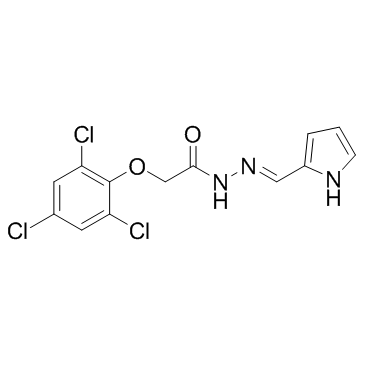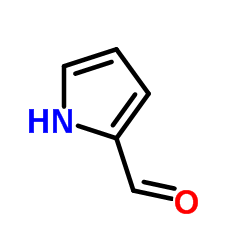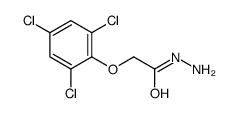ML 239
Modify Date: 2024-01-05 14:03:51

ML 239 structure
|
Common Name | ML 239 | ||
|---|---|---|---|---|
| CAS Number | 1378872-36-6 | Molecular Weight | 346.596 | |
| Density | 1.5±0.1 g/cm3 | Boiling Point | N/A | |
| Molecular Formula | C13H10Cl3N3O2 | Melting Point | N/A | |
| MSDS | Chinese USA | Flash Point | N/A | |
| Symbol |


GHS07, GHS09 |
Signal Word | Warning | |
Use of ML 239ML239 is a potent and selective inhibitor of breast cancer stem cells, with an IC50 of 1.16 μM. |
| Name | N'-[(E)-1H-Pyrrol-2-ylmethylene]-2-(2,4,6-trichlorophenoxy)acetoh ydrazide |
|---|---|
| Synonym | More Synonyms |
| Description | ML239 is a potent and selective inhibitor of breast cancer stem cells, with an IC50 of 1.16 μM. |
|---|---|
| Related Catalog | |
| In Vitro | ML239 (Compound 7j) is a potent and selective inhibitor of breast cancer stem cells, with an IC50 of 1.16 μM, with ∼24-fold selectivity against the control cell line[1]. ML239 inhibits breast cancer stem-like cells, most likely through activation of fatty acid desaturase 2 (FADS2). ML239 is cytotoxic to NCIH661 cells, and FADS2 knockdown reduces ML239 cytotoxicity, and furthermore, FADS2 inhibitor SC-26196 also reduces ML239 cytotoxicity in cancer cell lines (CCLs)[2]. |
| Cell Assay | Cancer cell lines (CCLs) are plated at a density of 500 cells/well in white opaque tissue-culture-treated Aurora 1536-well MaKO plates in the provider-recommended growth media using a highly automated platform. Compounds (ML239) are added by acoustic transfer using a Labcyte Echo 555. 24 hours after plating. The effects of small molecules (ML239) are measured over a 16-point concentration range (two-fold dilution) in duplicate. DMSO is used at a constant concentration of 0.33%, including vehicle-only control wells. As a surrogate for viability, cellular ATP levels are assessed 72 hours after compound transfer by addition of CellTiterGlo followed by luminescence measurement using a ViewLux Microplate Imager. Duplicates are averaged and luminescence values normalized to vehicle (DMSO) treatment and background (media-only) wells[2]. |
| References |
| Density | 1.5±0.1 g/cm3 |
|---|---|
| Molecular Formula | C13H10Cl3N3O2 |
| Molecular Weight | 346.596 |
| Exact Mass | 344.983856 |
| PSA | 69.97000 |
| LogP | 3.57 |
| Index of Refraction | 1.634 |
| Storage condition | 2-8℃ |
| Symbol |


GHS07, GHS09 |
|---|---|
| Signal Word | Warning |
| Hazard Statements | H302 + H312 + H332-H315-H319-H335-H400 |
| Precautionary Statements | P261-P273-P280-P305 + P351 + P338 |
| RIDADR | UN 3077 9 / PGIII |
|
~65% 
ML 239 CAS#:1378872-36-6 |
| Literature: THE BROAD INSTITUTE, INC.; GERMAIN, Andrew; MUNOZ, Benito; LEWIS, Timothy, A.; TING, Amal; YOUNGSAYE, Willmen; NAG, Partha, P.; DOCKENDORFF, Christopher; FERNANDEZ, Cristina, Victoria; DONCKELE, Etienne; MORGAN, Barbara; SKODA, Erin, M.; SHU, Byubg-Chul Patent: WO2013/32907 A1, 2013 ; Location in patent: Page/Page column 52 ; |
| Acetic acid, 2-(2,4,6-trichlorophenoxy)-, 2-[(1E)-1H-pyrrol-2-ylmethylene]hydrazide |
| N'-[(E)-1H-Pyrrol-2-ylmethylene]-2-(2,4,6-trichlorophenoxy)acetohydrazide |
| (2,4,6-Trichloro-phenoxy)-acetic acid (1H-pyrrol-2-ylmethylene)-hydrazide |
| ML239 |

